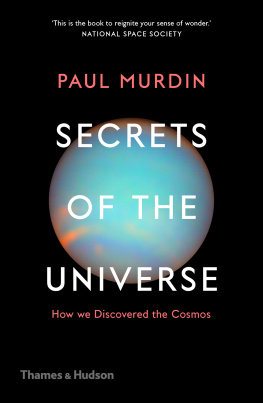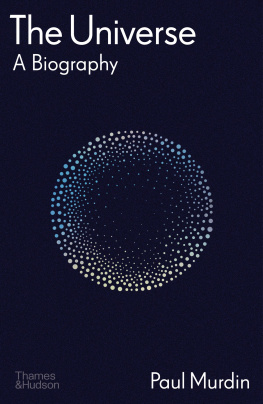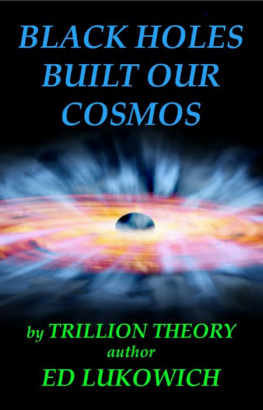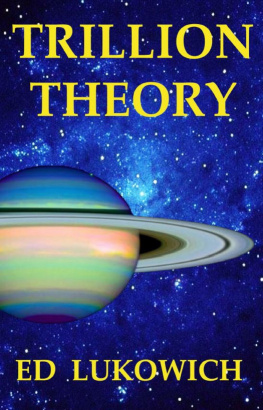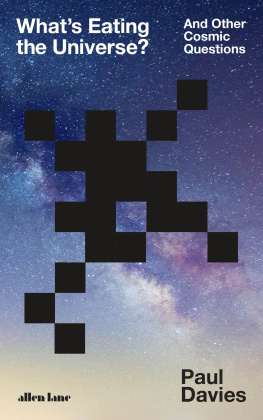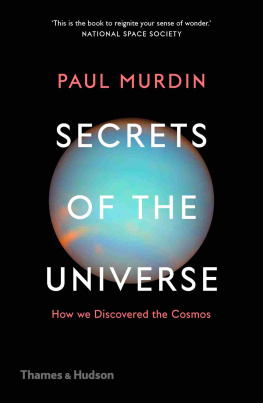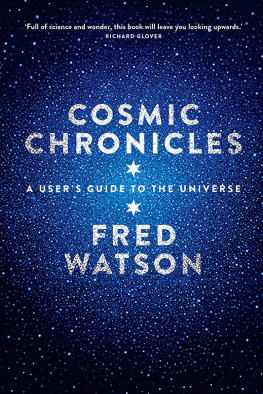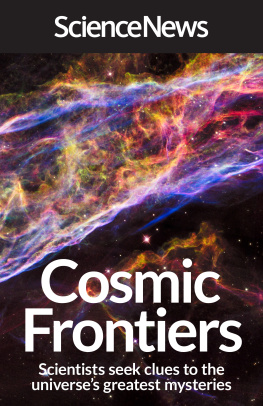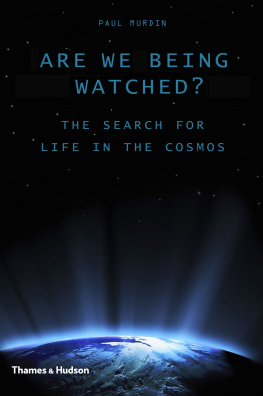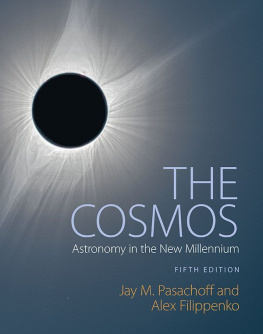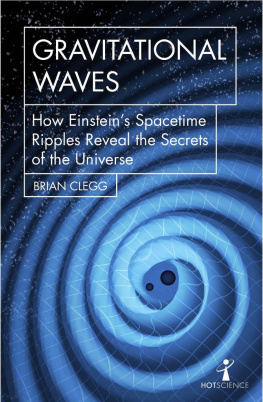


About the Author
Paul Murdin, OBE, is the author of The Secret Lives of Planets. He has worked as an astronomer in the UK, the USA, Australia and Spain, and discovered the first stellar black hole, Cygnus X1. He is a fellow of the Royal Astronomical Society, former president of the European Astronomical Society and Senior Professor Emeritus at the Institute of Astronomy at the University of Cambridge. In 2012 Asteroid 128562 was named Murdin by the IAU in honour of his contributions to the field.
Other titles of interest published by
Thames & Hudson include:
What Shape is Space?
Will AI Replace Us?
Dinosaurs Rediscovered
Comet
See our websites
www.thamesandhudson.com
www.thamesandhudsonusa.com
CONTENTS
The Australian Astronomical Observatory is located on a mountain near the small town of Coonabarabran in rural New South Wales, Siding Spring, in the Warrumbungle range, on the edge of a national park 400 kilometres northwest of Sydney. The seemingly interminable plains of the outback stretch to the western horizon. In the foreground, across a deep cut valley, are the volcanic hills, dykes and plugs of the range, with fanciful names: the Breadknife, Belougery Spire, Crater Bluff. Eucalyptus trees stand tall on the steep sides of the mountains, difficult for all to clamber through, except for kangaroos, koalas and wallabies. Brightly coloured lorikeets, cockatoos, galahs and rosellas fly singly and in flocks through the tree canopy, quarrelling with each other and their neighbours. The telescope buildings contrast with this natural scene; their hemispherical domes are painted white to reflect the heat of the Sun during the day in order to keep the telescopes cool at night. The whole area lies within a light-pollution protection zone, and the skies above the telescopes are in one sense dark, in another sense brilliant with the splendour of the Southern Hemisphere stars, especially in the southern winter when the centre of the Milky Way arches across the zenith.
Right after the telescope was completed, I was lucky enough to join the first group of six scientific staff of the Observatory, then called the Anglo-Australian Observatory. Its 4-metre telescope was at that time the largest in the Southern Hemisphere. It was built to a very high specification, and equipped with sensitive instrumentation, including what were then innovative computer-controlled electronic detectors. What it revealed, almost wherever it pointed, were new discoveries.
I well remember one such discovery. I had been working for twelve hours non-stop through the night on the identification of an X-ray source that is, I set myself with the telescope to track down the optical star that was responsible for a beam of celestial X-rays that had been detected by a satellite with a telescope sensitive to X-rays.
I found it. I had also discovered, fairly clearly, that the star was the result of a relatively recent supernova explosion that had taken place perhaps 3,000 years ago. I was also able to estimate that the star was about 2,000 light years away.
I finished the nights work as the day dawned, helped the telescope operator to shut down and left the observatory building in the golden light of the rising Sun to walk to the Lodge and a welcome sleep. The kangaroos and wallabies were finishing their nights grazing and loped away unhurriedly from my path across the grass, towards their own beds in the bush. Kookaburras were greeting the dawn with mad laughter, which echoed in the valleys below. Large, black birds called currawongs were waking up in the gum trees with a dawn chorus of melodious warbling and chortling.
I was feeling tired, but it was a lovely morning and I had had a successful night. I was the only person in the world who knew what I knew about the star and I felt pretty good.
As I walked along the path an even more thrilling thought struck me. Light from the explosion of the supernova had taken 2,000 years to get to Earth, and it had travelled on for a further 3,000 light years. It was now ranged on the surface of a sphere 5,000 light years in radius. Outside this sphere the supernova had not yet happened.
Now, 5,000 light years sounds like a large distance and indeed it is. However, it is not large compared with the size of the Galaxy, and although there are some stars within this sphere, there are not many. Some of them, like our Sun, may have planets, and some of the planets may be habitable, and some of them may have life on them, and some of this life might be intelligent, and some of the civilizations on these planets might be interested in astronomy and might have seen the supernova or, as I had, the X-ray source and followed the trail to the interesting star. But there was also a good chance that there was only one such civilization the one here on Earth. If there was indeed only the one astronomy-curious civilization within the 5,000-light-year sphere our own I was not only the one person in the world who knew what I knew, I might be the one person in the Galaxy, or indeed in the Universe, who knew what I knew. I floated happily to bed and, pleased with myself, slept soundly, treasuring in my dreams the secret that I had unlocked from the Universe.
I was happy to learn during the research for this book that other scientists had felt the same sense of exhilaration when they had cracked a problem and made a cosmic discovery. Einsteins worry about his own theory of General Relativity was assuaged by his discovery of the reason for a twist in the orbit of Mercury and, for a few days, he was beside himself with joyous excitement. Henry Norris Russell described the discovery of white dwarfs with Edward Pickering and Williamina Fleming: I knew enough, even then, to know what it meant At that moment, Pickering, Mrs Fleming and I were the only people in the world who knew of white dwarfs. Watching the transit of Venus in 1639, William Crabtree stood for some time motionless, scarcely trusting his own senses, through excess of joy.
Discoveries in astronomy challenge our fundamental assumptions about the Universe. They alter our perception of matter, time and distance; they transform how we view our history and future as a species. Where the astronomers of antiquity spoke of fixed stars, we speak of whirling galaxies and the death and birth of stars in supernovae. Where we once considered the Earth to be the centre of the Universe, we now see it as a small planet among millions of similar systems, a few of which might also hold life. These dramatic shifts in perspective hinge on thousands of individual moments of discovery, moments when it became clear to an observer that a component of the Universe from a tiny subatomic particle to a supermassive black hole was not as it once seemed. Each is a revelation that unlocks yet another of the infinite secrets of the Universe.
My own discoveries were more modest, at the scale of the quanta of astronomy over 50,000 pages per year of similar-scale discoveries in astronomy are published every year. This book is about major discoveries that unlocked major secrets of the Universe not run-of-the-mill discoveries in astronomy, but the big ones. I have selected them not only because they are important, but also because the people involved were interesting, because the knowledge that they encompass illustrates the range of astronomy, or because the stories behind them illustrate how science, and in particular astronomy, works.
Next page
